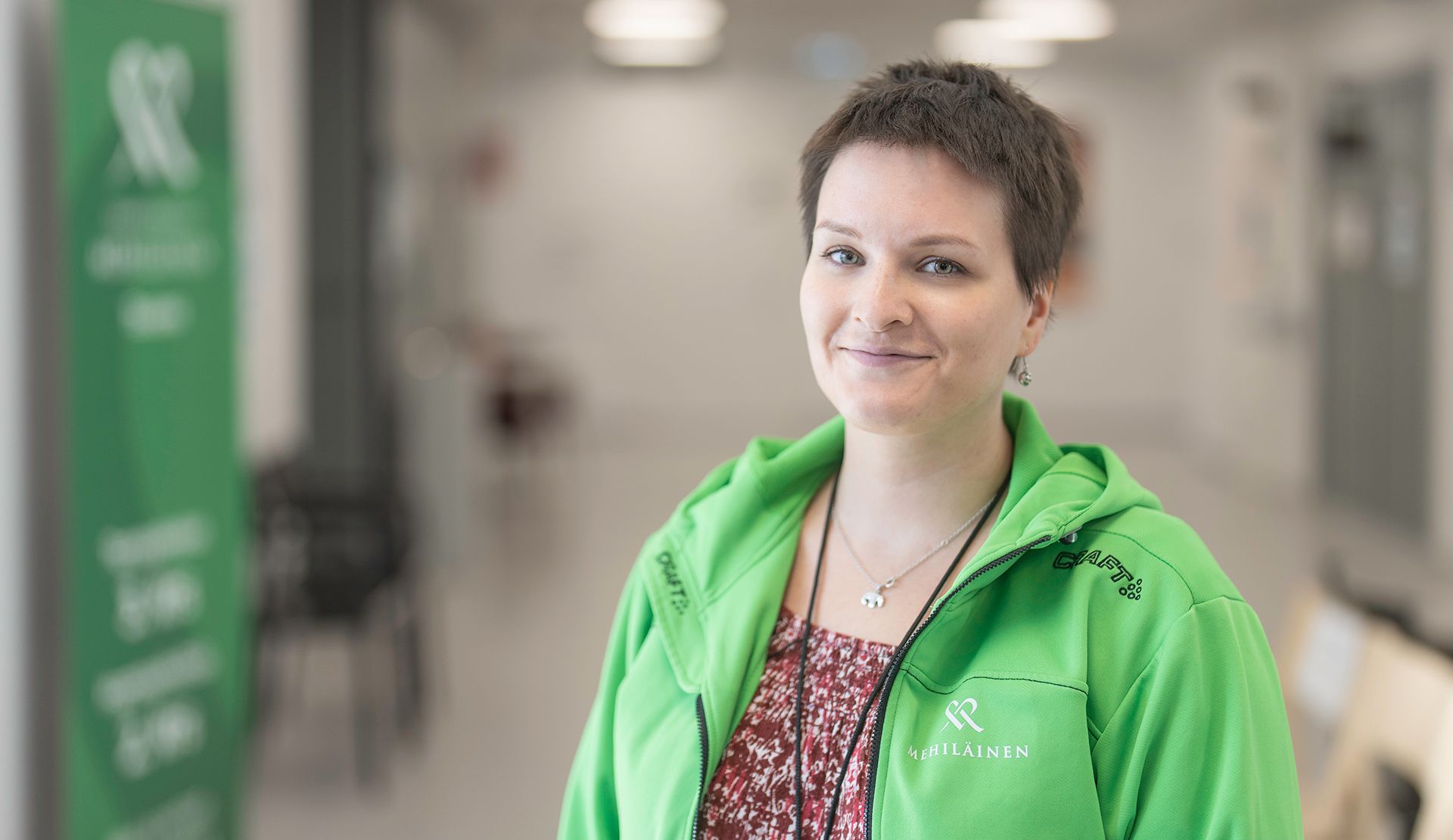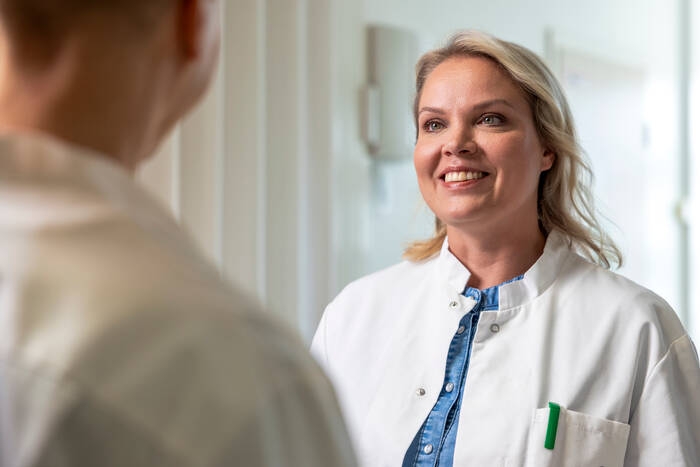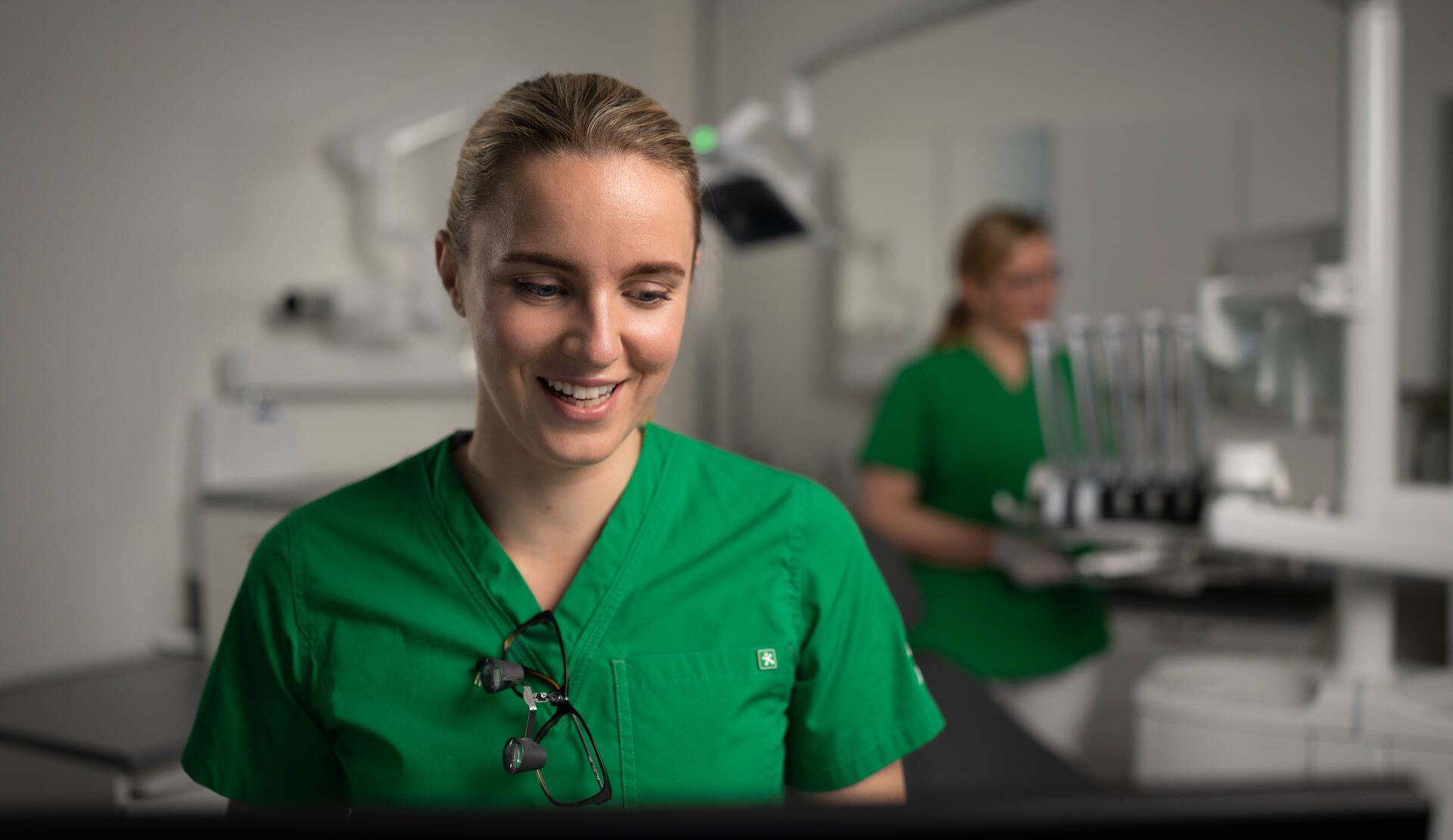
Breast augmentation surgery
Specialist in the article

Revised 5/27/2025
Breast augmentation surgery in brief
- Breast augmentation surgeries are generally performed only on individuals aged 18 or older, with exceptions for severe asymmetry or other breast deformities.
- The results of augmentation surgeries are durable, but it is important to remember that age, genetics, and weight fluctuations can alter the size and shape of the breasts over time.
- Most surgeries are performed as outpatient procedures, allowing patients to return home the same day.
Who is breast augmentation surgery suitable for?
Breast augmentation surgery can correct small breasts, disproportionate body contours, or make uneven breasts symmetrical. Breasts that have become saggy or deflated due to pregnancy or aging can be enhanced for fullness and firmness. If there is excess skin, a breast lift may also be necessary.
Typically, breast augmentation is performed only on individuals aged 18 or older, with exceptions for severe asymmetry or other breast deformities.
Candidates for the procedure should be mentally mature and understand the reasons for undergoing surgery. Breast development must be complete before considering breast augmentation surgery.
While the results of breast augmentation surgery are durable, it is important to remember that factors such as age, genetics, and weight fluctuations can alter the size and shape of the breasts over time.
Different techniques for breast augmentation surgery
The technique used in breast augmentation surgery depends on the individual's unique characteristics, physical needs, and aesthetic goals. The choice is also influenced by the type, shape, and size of the implant, as well as the selected surgical technique. The plastic surgeon will review the different surgical methods and their variations before the procedure.
Breast augmentation with silicone implants is one of the most common cosmetic procedures. Silicone implants can enhance the size and shape of the breasts. They are made of soft, flexible silicone gel that mimics natural tissue.
The procedure can boost self-confidence and improve body image, but the decision should be well-considered. Before surgery, it is important to discuss your expectations and potential risks with an experienced plastic surgeon to ensure the outcome meets your desires.
Silicone breasts can be a long-term investment in personal well-being, and their popularity is based on their natural appearance and durable material. Careful post-operative care promotes recovery.
Breast implants offer a personalized and effective way to enhance the appearance of the breasts. They can increase breast size, correct asymmetry, or restore shape after pregnancy or weight fluctuations. Breast implants can be placed under the chest muscle or breast tissue.
Various options are available, such as round or anatomical implants. Breast implants have a silicone shell filled with silicone gel. The choice of implant is tailored to your body and preferences to achieve the most natural and balanced result.
Before the procedure, it is important to have a thorough discussion with the plastic surgeon about risks, recovery, and expectations. When the decision is based on realistic expectations and professional advice, breast implants can improve body image and boost self-confidence in the long term.
In fat transfer, fat is taken from another part of the body and transferred to the chest muscle and the subcutaneous tissue layer of the breast. Fat is not transferred directly into the breast tissue to facilitate future mammogram interpretation. If the augmentation is done with fat transfer, only 1–2 small incisions are made in the breasts.
Preparing for breast augmentation surgery
- Consultation. The first step in breast augmentation is a consultation with a plastic surgeon. During the consultation, aesthetic goals and any concerns about the procedure are discussed.
- Health Assessment. The plastic surgeon will also assess your overall health. The consultation will cover past and current illnesses, medications, supplements, previous surgeries, family history of breast cancer, and mammogram results.
- Physical Examination. During the consultation, the plastic surgeon will examine the breasts, assess their size, shape, skin elasticity, and nipple placement. The doctor may also take photographs, which will be visible in OmaMehiläinen. The doctor may recommend a mammogram before surgery.
- Treatment Options. The plastic surgeon will review the appropriate technique for the procedure, the risks involved, and the necessary tests. The doctor will provide an estimate of the expected changes. Breast augmentation surgery should not be undertaken lightly, and the choice of implant size should be carefully considered.
- Instructions. Following the plastic surgeon's instructions is crucial to ensure the best possible outcome. Smoking should be avoided for at least four weeks before and after surgery.
- Clothing. On the day of surgery, bring loose and comfortable clothing and support bras if recommended by the plastic surgeon.
- Support. Ensure you have help for returning home and assistance with dressing, household chores, and shopping during recovery.
- Smoking. Smoking should be avoided for at least four weeks before and after surgery.
How breast augmentation surgery proceeds
Breast augmentation surgery is performed to ensure scars are as inconspicuous as possible. The implant is placed in the inframammary fold, either under or over the chest muscle. Once the pocket is created, the implant is inserted, and the incision is carefully closed.
The surgery is performed under general anesthesia. An anesthesiologist monitors the procedure during and after the surgery.
In the recovery room, your condition is monitored, and pain medication is provided as needed. The professional staff ensures that post-operative recovery proceeds as smoothly and safely as possible.
Most breast augmentation surgeries are performed as outpatient procedures, allowing patients to return home the same day. Occasionally, the surgery may require an overnight stay in the hospital. You will receive home care instructions and a follow-up appointment will be scheduled.
Recovery from breast augmentation surgery
- Rest. Avoid physical exertion, lifting heavy objects, and sudden arm movements. Light activities can be resumed a few days after surgery.
- Hygiene. You can shower normally the day after surgery. The wounds are usually covered with surgical tape, which can get wet and should remain in place until the stitches are removed or for 1–2 weeks.
- Sauna. Avoid sauna use for at least two weeks after surgery. The heat can increase swelling and slow down healing, so it is important to wait until the surgeon gives permission.
- Clothing. Wear compression garments or support bras if recommended by the surgeon, as they help reduce swelling and support the breasts.
- Swelling. Swelling usually subsides within a few weeks, revealing the final result. Compression garments can help reduce swelling and promote healing. Bruising also typically fades within a few weeks.
- Exercise. Light walking is allowed immediately and can help improve circulation and reduce swelling. You can return to activities like stretching or yoga when you feel comfortable and the surgeon approves. Avoid strenuous exercise, such as running, weightlifting, or intense aerobic activities, for at least 4–6 weeks after surgery.
- Follow-up. The first post-operative follow-up appointment is scheduled 1–2 weeks after surgery. Subsequent follow-ups are usually at 3 and 9 months post-surgery, during which the plastic surgeon evaluates the long-term results.
- Medications. The surgeon may prescribe anti-inflammatory drugs to manage post-operative pain. These should be used as directed, ensuring they are safe to use with any existing prescription medications. Pain typically subsides within a few days.
- Home care instructions. After surgery, you will receive comprehensive and clear instructions for home care. Following these instructions is essential to ensure the best possible outcome.
- Sick leave. The length of sick leave depends on the type of work and is typically 2–4 weeks.
The prices presented are indicative. The exact price will be determined after a consultation with the plastic surgeon, once individual needs have been assessed. The decision to proceed with surgery can be made after the consultation.
The final price is influenced by factors such as:
- Value-added tax (VAT): If the surgery is part of medical treatment, such as breast reduction or eyelid correction, no VAT is charged for the procedure. If a similar surgery is performed for aesthetic reasons, VAT will be added to the price.
- Procedure location: The price is affected by whether the surgery is performed in outpatient procedure conditions or as day surgery in a hospital.
At Mehiläinen, you can flexibly use various payment methods, such as paying in installments. Read more about payment methods.
| Service | Price estimate |
|---|---|
| Abdominoplasty also known as tummy tuck, vat 25.5 % The price does not include compression garments, 100–200 €, or overnight monitoring and on-call services, 740–1500 €/night. | from 9 550,00 € No Kela reimbursement |
| Scar revision in the head or neck area, vat 0 % | from 550,00 € No Kela reimbursement |
| Facelift, vat 25.5 % The price does not include compression garments, 100–200 €, or overnight monitoring and on-call services, 740–1500 €/night. | from 13 600,00 € No Kela reimbursement |
| Eyebrow lift, vat 0 % | from 4 100,00 € No Kela reimbursement |
| Eyebrow lift, aesthetic, vat 25.5 % | from 5 150,00 € No Kela reimbursement |
| Rhinoplasty, vat 25.5 % | from 12 900,00 € No Kela reimbursement |
| Removal of a mole or skin lesion, vat 0 % The price does not include potential tissue sample analysis. Tissue sample analysis starts at 122.50 €. | from 470,00 € No Kela reimbursement |
| Removal of a mole or skin lesion with a laser in the head or neck area, vat 0 % The price does not include potential tissue sample analysis. Tissue sample analysis starts at 122.50 €. | from 430,00 € No Kela reimbursement |
| Forehead lift, open or endoscopic, vat 25.5 % The price does not include compression garments. Compression garment prices are 100–200 €. | from 7 300,00 € No Kela reimbursement |
| Liposuction from a small area (e.g., under the chin, vat 25.5 % The price does not include compression garments. Compression garment prices are 100–200 €. | from 2 900,00 € No Kela reimbursement |
| Liposuction from a larger area, e.g., abdomen and flanks, vat 25.5 % The price does not include compression garments. Compression garment prices are 100–200 €. | from 8 150,00 € No Kela reimbursement |
| Removal of breast implants from both breasts, vat 25.5 % | from 4 600,00 € No Kela reimbursement |
| Breast lift surgery for both breasts, vat 25.5 % The price does not include compression garments. Compression garment prices are 100–200 €. | from 9 600,00 € No Kela reimbursement |
| Breast reduction surgery for both breasts, vat 0 % The price does not include compression garments. Compression garment prices are 100–200 €. | from 8 800,00 € No Kela reimbursement |
| Breast reduction surgery (aesthetic) for both breasts, vat 25.5 % The price does not include compression garments. Compression garment prices are 100–200 €. | from 11 000,00 € No Kela reimbursement |
| Breast augmentation with implants, vat 25.5 % The price does not include implants or support bras. Implant prices are 580–1100 €/pair. Compression garment prices are 100–200 €. | from 5 800,00 € No Kela reimbursement |
| Upper eyelid surgery for both eyes, vat 0 % | from 2 050,00 € No Kela reimbursement |
| Upper eyelid surgery (aesthetic) for both eyes, vat 25.5 % | from 2 600,00 € No Kela reimbursement |
Other related services
Body and breasts
Comprehensive and expert plastic surgery for the body and breasts.
Consultation with a plastic surgery nurse
A free consultation helps you find the right treatment options.
Face and eyelids
We provide personalized solutions for the aesthetic needs of your face and eyelids.
Nose and ears
Enhance the shape and structure of your nose or ears with the expertise of a plastic surgeon.
Plastic surgeon
A specialist in plastic surgery performs treatments and surgeries to enhance the appearance and functionality of the face and body.
Skin lesions and moles
Treat skin lesions and remove moles safely and discreetly.
Rintojen suurennusleikkaus Virossa
Mehiläisen tytäryhtiöt Virossa tarjoavat rintojen suurennusleikkauksia myös suomalaisille asiakkaille. Palveluista on mahdollista hakea Kelalta korvausta rajat ylittävän terveydenhuollon lain mukaisesti.

Frequently asked questions about breast augmentation surgery
Breast augmentation surgery uses implants or fat transfer to enhance the size and shape of the breasts. This helps correct small breasts or asymmetry, and the surgery may also include a breast lift. The procedure is usually performed for aesthetic reasons but can also correct congenital or trauma-related deformities.
Breast augmentation surgery can improve the appearance of the breasts and body image, as well as correct asymmetry, which can positively impact quality of life. The surgery can also improve clothing fit and provide more options for dressing.
Breast augmentation surgery is generally performed only on adults, with exceptions for severe asymmetry or other breast deformities. Consultation with a surgeon is important before making a decision, as health status and expectations affect the suitability of the surgery. It is also important for the patient to be aware of the risks and potential complications of the procedure.
Recovery begins immediately after the surgery, and patients can often return home the same day. Full recovery may take several weeks and requires rest and follow-up care. Heavy physical activity should be avoided, and the surgeon's instructions should be followed to ensure smooth healing.
The results are generally long-lasting, but age, genetics, and weight fluctuations can affect the shape and size of the breasts over time. The lifespan of implants can vary, and they may require replacement or adjustment over the years. Regular check-ups are recommended to detect any changes early.
The exact cost of breast augmentation surgery depends on the scope of the procedure and the area being treated. The price usually includes the initial consultation, the procedure itself, necessary hospital care, and follow-up appointments. A precise cost estimate is provided during a consultation with the plastic surgeon, once the scope and details of the procedure are clarified. Learn more about Mehiläinen's flexible payment options.


